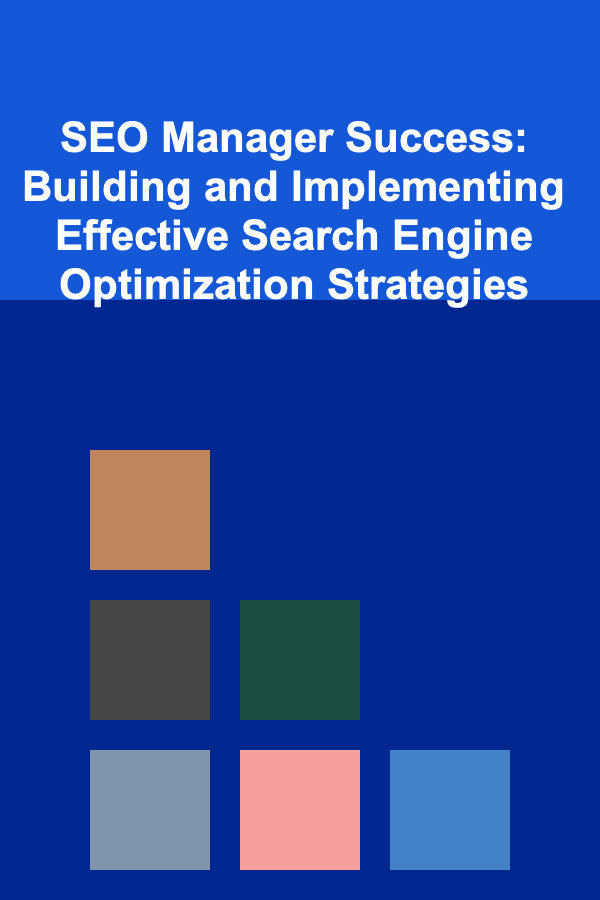
How to Make a Checklist for Creating a Compelling Event Press Release
ebook include PDF & Audio bundle (Micro Guide)
$12.99$5.99
Limited Time Offer! Order within the next:

A press release is one of the most powerful tools in your PR arsenal, especially when it comes to promoting an event. Whether it's a product launch, a charity gala, or a corporate conference, a well-crafted event press release can build anticipation, engage your audience, and grab the attention of media outlets. However, creating an effective press release requires more than just filling in the blanks. It needs to be compelling, clear, and professionally structured.
This guide outlines the essential steps to create an event press release that will help your event stand out and get noticed by both journalists and attendees.
Understand the Purpose of the Press Release
Before jumping into writing the release, you must first understand its purpose. An event press release serves several key functions:
- To Inform: A press release provides the media and your target audience with essential details about the event.
- To Generate Interest: The release aims to capture attention and encourage journalists to cover your event.
- To Drive Action: It should inspire the audience to take action, whether it's registering for the event, attending, or simply spreading the word.
By understanding the release's purpose, you can better structure your content and make sure your message is both engaging and informative.
Craft a Compelling Headline
The headline is arguably the most important part of the press release because it's the first thing that journalists and readers will see. A strong, compelling headline can be the difference between your release being opened or ignored.
Actionable Steps:
- Keep It Concise: Aim for a headline that is around 10-12 words long. It should be straightforward and convey the most important aspect of the event.
- Make It Engaging: Use powerful words that evoke emotion or curiosity. For example, "Join Us for an Unforgettable Night of Music and Charity" is more compelling than "Charity Event Announcement."
- Include Key Event Details: If space allows, include the event name, location, and date. For example, "Tech Conference 2025: Revolutionizing Innovation in San Francisco" is clear, direct, and informative.
- Use Active Voice: Active voice makes the headline feel more immediate and dynamic, encouraging people to read on.
Craft a Strong Subheadline
While the headline grabs attention, the subheadline provides additional context and can elaborate on the event details, giving your readers more reason to engage.
Actionable Steps:
- Provide Additional Details: Use the subheadline to answer the "why" behind the event. For instance, "This groundbreaking event brings together the brightest minds in technology to discuss the future of AI."
- Reinforce the Headline: The subheadline should work in harmony with the headline, providing supplementary information that draws readers deeper into the content.
- Keep It Brief: A subheadline should be one or two sentences, offering clarity without overwhelming the reader with excessive details.
Write the Lead Paragraph
The first paragraph of your press release is your chance to deliver the key message. It should summarize the most important aspects of the event in a concise and compelling way. Journalists often decide whether to continue reading based on this section, so make it count.
Actionable Steps:
- Answer the Five W's: In this paragraph, make sure you answer the core questions---Who, What, When, Where, and Why. A typical example might read, "The 2025 Tech Conference, taking place at the San Francisco Convention Center on June 15th, will bring together industry leaders to explore the latest advancements in artificial intelligence."
- Use a Hook: The first sentence should grab attention immediately. Start with something intriguing or newsworthy that piques curiosity. For example, "In an era of rapid technological evolution, the 2025 Tech Conference promises to be the most exciting gathering for innovators in AI."
- Keep It Focused: Avoid burying important information in the first paragraph. Make sure readers can grasp the essence of the event within a few sentences.
Provide Event Details in the Body
After the lead paragraph, the body of the press release should offer a deeper dive into the event details, providing readers with all the information they need to understand what, when, and why they should attend.
Actionable Steps:
- Break It Down by Sections: Use clear subheadings to break up the content and make it easier for readers to find the information they need. Examples include "Event Highlights," "Featured Speakers," and "Registration Information."
- Highlight Key Speakers and Performers: If the event has notable speakers, performers, or sponsors, be sure to mention them in this section. Include a brief bio or highlight why they're important to the event's significance.
- Explain the Event's Importance: Why is this event happening? What is its impact on the community or industry? Make sure to communicate the significance of the event and why it's not to be missed.
- Include Any Additional Information: Depending on the event, this might include information about the venue, special activities, ticket pricing, sponsorships, or other relevant logistics.
Add Quotes for Credibility
Including quotes from key figures involved in the event (such as organizers, speakers, or sponsors) adds authority and helps humanize the story. Quotes also serve as valuable media assets that journalists can easily incorporate into their coverage.
Actionable Steps:
- Use Strong, Relevant Quotes: The quote should add value to the story by reinforcing why the event is important. For example, "We are thrilled to bring together the brightest minds in AI to shape the future of innovation," said John Doe, CEO of InnovateTech.
- Keep It Concise: Quotes should be impactful but not too long. Aim for one to two sentences that express enthusiasm or the significance of the event.
- Attribute Properly: Ensure each quote is attributed to the correct person with their title and organization, adding legitimacy to the press release.
Provide Call-to-Action (CTA)
Your press release should always include a clear call to action, urging readers to take the next step. This could be registering for the event, buying tickets, or contacting for more information.
Actionable Steps:
- Be Clear: Use direct language to tell readers what you want them to do. For example, "Register for the event now at [website link]" or "Get your tickets before they sell out!"
- Create Urgency: If applicable, include a limited-time offer or deadline to encourage quick action. For instance, "Early bird tickets are available until May 1st---don't miss out!"
- Provide Contact Information: Include the contact details for press inquiries or further event information. This could be a phone number, email address, or website URL.
Include Media Contact Information
Always include the contact details of someone who can provide further information to journalists or media outlets. This is essential for making sure reporters can reach out for follow-up questions or additional interviews.
Actionable Steps:
- List a Primary Contact : Include the name, title, email address, and phone number of the media contact person. For example, "For media inquiries, contact Jane Doe at [email protected] or call (123) 456-7890."
- Provide Backup Contacts: If applicable, include additional contacts in case the primary contact is unavailable.
Finalize the Press Release Format
Once your content is in place, it's important to ensure that your press release follows the proper formatting conventions.
Actionable Steps:
- Standard Formatting: Use a clean, easy-to-read font (such as Arial or Times New Roman) and maintain a professional layout. Keep the document double-spaced with a clear header.
- Include the Release Date: At the top of the press release, include the release date. This lets journalists know when they can begin distributing the release.
- Add Boilerplate Information: A boilerplate is a short paragraph at the end of the press release that provides background information about your company or organization. It's a standard part of any press release and should be concise and informative.
- End with "###": Press releases are traditionally concluded with three hash symbols (###) at the bottom of the page to indicate the end of the release.
Proofread and Edit
Before sending your press release out, carefully proofread and edit it for clarity, grammar, and accuracy. A press release full of errors will appear unprofessional and damage your reputation.
Actionable Steps:
- Check for Typos and Errors: Double-check spelling, grammar, and punctuation, especially for names, dates, and other critical information.
- Verify Event Details: Confirm all event details, such as dates, times, locations, and speakers, are correct. Errors in these details can lead to confusion and missed opportunities.
- Ask for Feedback: If possible, have a colleague or professional editor review the press release before distribution.
Conclusion
Creating a compelling event press release requires more than just writing down event details. It involves strategically crafting each section to engage your audience, inform the media, and drive action. By following this actionable checklist, you can ensure that your press release is professional, impactful, and ready to generate buzz for your event. Always remember, the more thoughtful and organized your release, the greater the chances it will get noticed.

How to Choose the Right Pet Furniture for Your Home
Read More
How to Keep Your Pet Comfortable During Seasonal Changes
Read More
How to Maintain Your Home's Landscaping During All Seasons
Read More
How to Maintain Your Home's Lighting Fixtures for Safety and Style
Read More
How to Manage Your Home Budget During Job Transitions
Read More
SEO Manager Success: Building and Implementing Effective Search Engine Optimization Strategies
Read MoreOther Products

How to Choose the Right Pet Furniture for Your Home
Read More
How to Keep Your Pet Comfortable During Seasonal Changes
Read More
How to Maintain Your Home's Landscaping During All Seasons
Read More
How to Maintain Your Home's Lighting Fixtures for Safety and Style
Read More
How to Manage Your Home Budget During Job Transitions
Read More